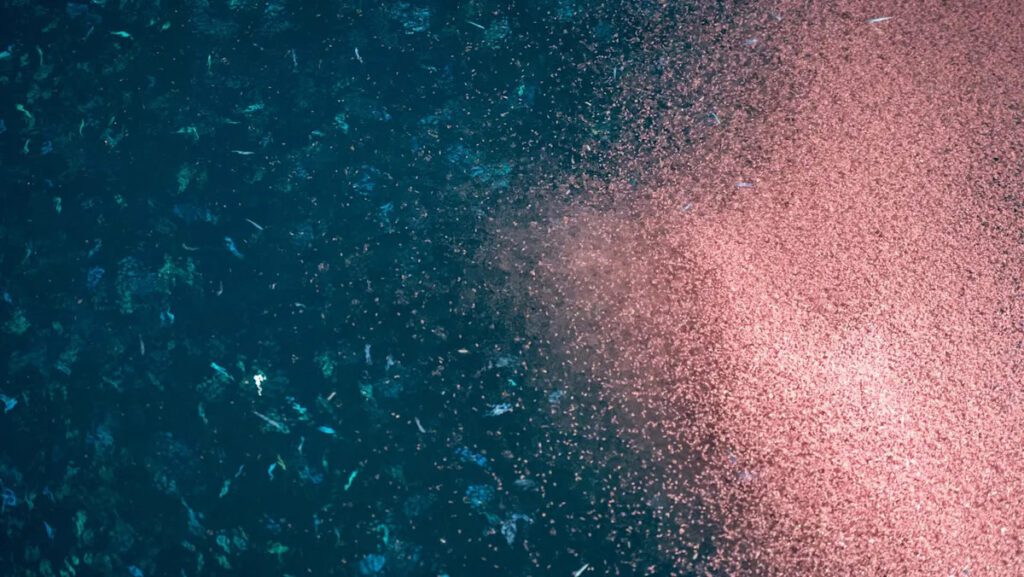It has long been understood that tiny Antarctic krill play a vital role in the food chain, providing essential nourishment for everything from fish and sea birds to seals and whales. However, recent research has highlighted another increasingly important job that krill perform for the ecosystem: sequestering carbon, according to Science News.
What’s happening?
To feed, krill take in ocean water and capture phytoplankton, which they then slowly digest. As part of this process, the krill discharge tiny particles called boluses. These boluses, which contain carbon, then sink to the ocean floor, per Science News.
“Antarctic krill … sequesters a similar amount of carbon through its sinking faecal pellets as marshes, mangroves and seagrass,” wrote the authors of a 2024 study published in Nature Communications.
This equates to between $4 billion and $46 billion worth of ecosystem services per year “depending on the price of carbon, with krill pellet carbon stored for at least 100 years and with some reaching as far as the North Pacific,” the authors continued.
However, a new study published in October 2025 has revealed that microplastic pollution might interfere with krill feeding and digestion in ways that are not yet fully understood.
Observing krill feeding behavior in a laboratory setting, the researchers behind the new study found that the presence of microplastics caused krill to release their boluses more frequently. In fact, the study showed that microplastics made the krill release three times as many boluses as under other conditions, according to Science News.
Why is it important?
The discovery that microplastics caused krill to release boluses more frequently has concerned scientists for several reasons. First, krill were believed to release boluses only when they were full, having received enough nutrients from their food. However, if the krill released their boluses more frequently, they could be doing so before being sufficiently nourished, which could impact the vital role that krill play in the food chain, per Science News.
Further, releasing boluses more frequently could potentially hinder krill’s ability to sequester carbon and send it to the ocean floor.
As global temperatures continue to rise, the world needs all the help it can get removing planet-heating pollution like carbon from the atmosphere. If the presence of microplastics diminishes the amount of carbon that krill are able to sequester, the net effect will be more carbon in the atmosphere, leading to hotter temperatures.
What’s being done about it?
Gaining a better understanding of the impact that microplastics have on krill feeding and bolus formation will require further research. In the meantime, the new study serves as yet another warning about the far-reaching impact that microplastic contamination is having on the environment and human health.
While reducing plastic pollution will require a global effort on a vast scale, there are still plenty of actions that individuals can take to reduce plastic waste and lower the demand for new plastic production. For example, by choosing plastic-free options for everyday products and supporting brands that use plastic-free packaging, you can reduce plastic waste while also sending an important message to companies that consumers prefer plastic-free alternatives.
Join our free newsletter for good news and useful tips, and don’t miss this cool list of easy ways to help yourself while helping the planet.

